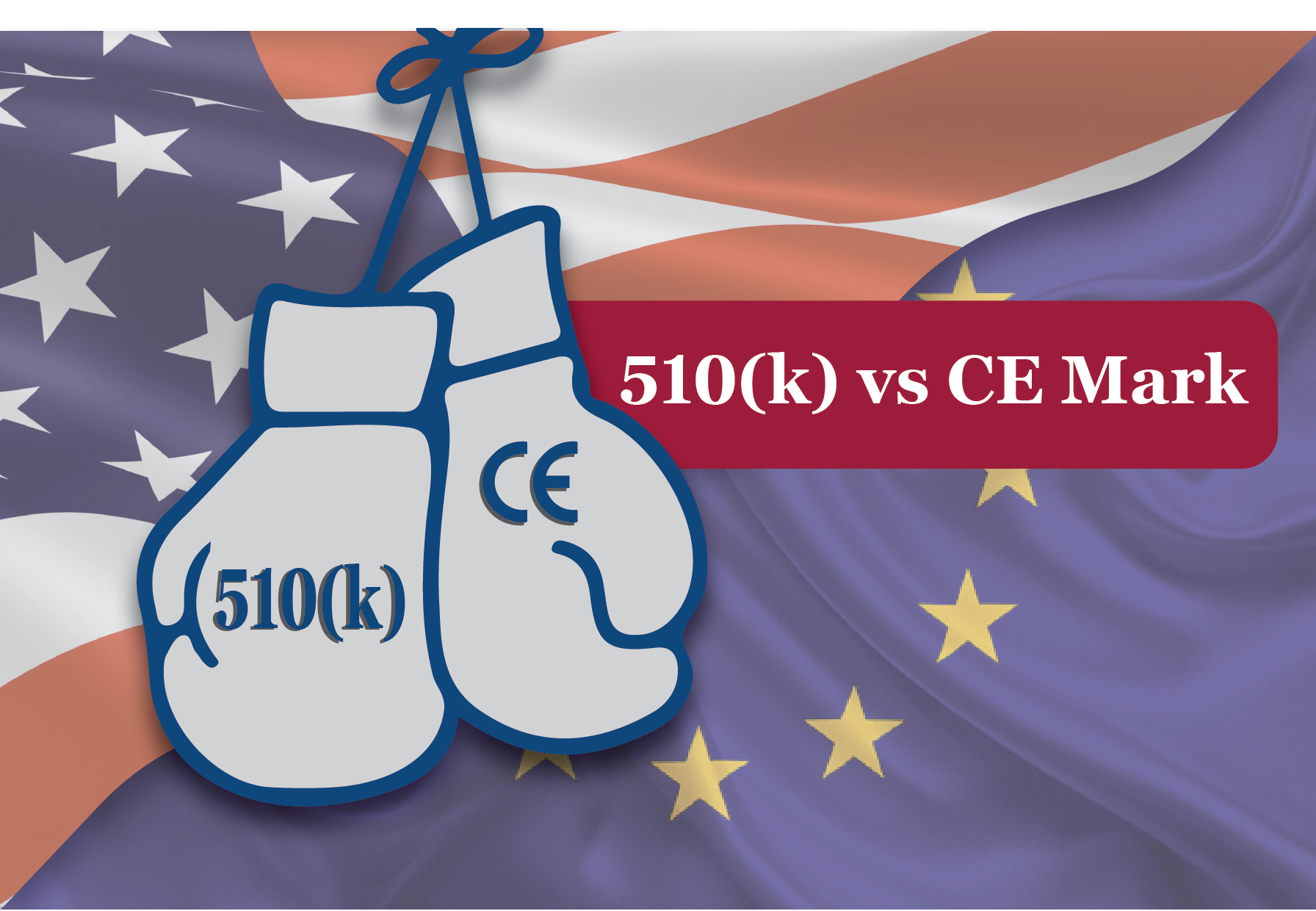A 510(k) is the most utilized regulatory pathway to market a medical device in the US. For a device of the same level of risks, a CE Mark is required to market a medical device in the European Economic area.
In order to obtain a CE mark, a manufacturer must demonstrate that they comply with the EU MDD and beginning May 2020 companies will have to comply with the EU MDR.
When a manufacturer submits the pre-market notification 510(k) application, the manufacturer needs to ensure that the design history file (DHF) is ready to be included in the application. And while the application is in the process of being reviewed, the manufacturer may get all the design transfer and manufacturing activities tied up and generate the Device Master Record (DMR). 1
With the CE mark application, the company must have its DMR and its manufacturing activities validated before the audit. The technical file that is required to be created for the product must contain all of its risk documentation in accordance with ISO 14971, which includes the risk analysis, risk management plan, risk mitigation measures, external testing certificates and clinical evaluation reports that demonstrate the clinical safety and effectiveness of the product, either in the form of clinical trials or literature review.1
Another major difference is the Quality Management System requirements. With the CE marking, the quality system is audited as part of the process before the notified body can grant the CE mark. Conversely, to get your device cleared through the 510(k) path, the QMS has to be compliant to 21CFR820 and is audited via unannounced inspections by the FDA. The EU MDD and the MDR have annexes that contain the QMS requirements; however since there are multiple directives and each directive indicates multiple ways for a device manufacturer to conform to the QMS requirements, it is more common for companies to comply with ISO 13485.1
EMMA International can make it easy for you to comply with the US and EU regulations. Give us a call at 248-987-4497 or email us at info@emmainternational.com.
1Starfish Medical 5 Similarities and Differences between Medical Device 510(k) and CE Marking Pt. 2 retrieved on 10/17/2019 from https://starfishmedical.com/blog/510k-ce-marking-pt-2/







